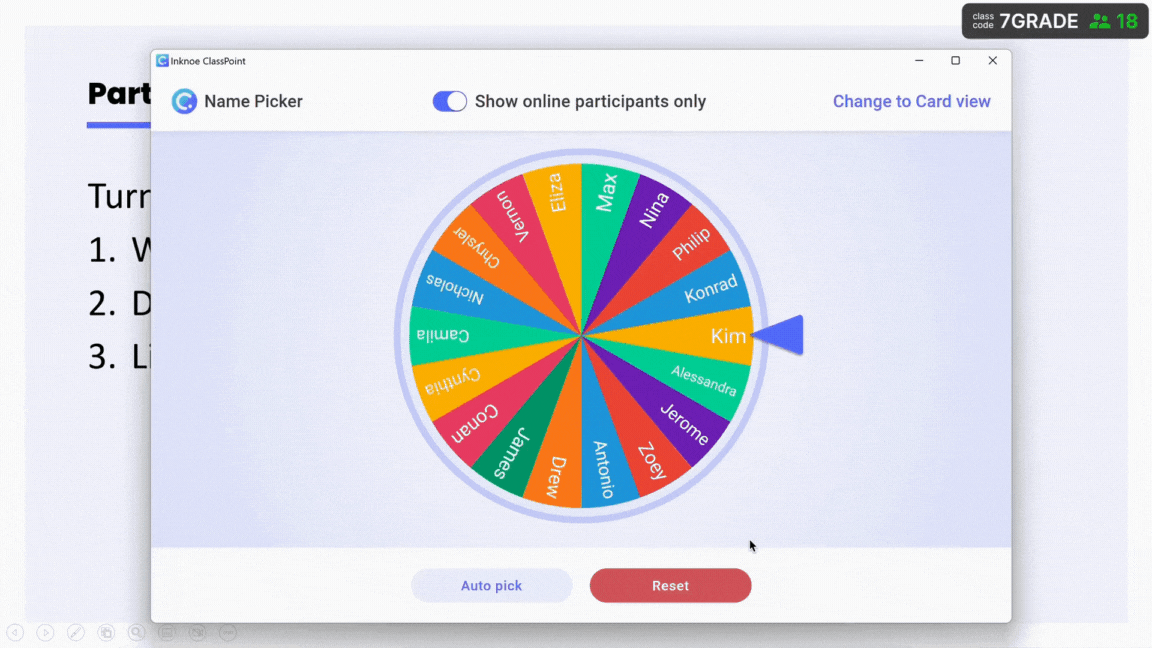There is no shortage of ideas in teaching today, especially with eLearning shaping so much of what happens in classrooms. The real challenge is finding strategies that work without adding hours of prep.
That is why gamification matters most when it is simple. It gives you a way to measure student engagement in real time and keep lessons moving without a heavy setup.
The right gamification ideas do not eat up planning time but still bring the energy shift you want in the classroom. That is why in this blog, you will find gamification examples designed with busy teachers in mind.
1. Points and Badges
Points and badges are the foundation of most classroom gamification systems because they’re simple, yet visible. Students quickly understand that effort and participation lead to recognition, and small wins begin to matter just as much as final grades.
This system works because it rewards the process of learning. When students see that they can get merit for what they do well, they’re more willing to engage in everyday classroom activities.
Here are a few easy ways to implement a points-and-badges system:
- Award points for answering questions, contributing ideas, or helping peers.
- Design 3–5 badges that highlight values you want to encourage, like “Problem Solver” or “Kind Communicator.”
- Use a class chart, digital board, or even sticky notes for tracking. Make it visible.
- Recognize students not only for high achievement but also for improvement and effort.
2. Progress Bars or Levels
Progress bars give students a clear view of how far they’ve come and how much is left to reach mastery. A leveling system, in particular, makes learning feel more like a game, where each step forward is a win to celebrate.
Instead of waiting until the end of a unit for feedback, students track their growth in real time. The momentum builds naturally: once a student “levels up,” they’re motivated to push toward the next stage.
Here’s a sample way you could design a classroom leveling system:
| Level | Skill Focus | Example Task | Reward/Recognition |
|---|---|---|---|
| Level 1 | Basics Mastered | Complete a starter quiz | Verbal praise, 5 points |
| Level 2 | Applied Understanding | Solve real-world problem | Badge: “Critical Thinker” |
| Level 3 | Collaboration | Team project submission | Group reward, display |
| Level 4 | Independent Mastery | Create a mini-presentation | Extra credit, sticker |
| Level 5 | Expert/Leader | Teach peers a concept | Recognition on board |
This table is just one example. You can adapt the skills, tasks, and rewards to match your subject or class level. The key is to keep the system visible and easy to update.
3. Leaderboards
Leaderboards are one of the most recognizable gamification tools, and for good reason: they tap into students’ natural sense of competition and achievement.
The key is balance. A leaderboard shouldn’t only highlight the top scorers, but rather, showcase growth. That way, it avoids discouraging those who may not always be in the top spots while still celebrating success.
Leaderboards are also versatile. They can be physical, like a poster on the classroom wall, or digital, projected during lessons. What matters most is letting it known that the leaderboard will be updated regularly, so everyone stays motivated to keep pushing forward.
Pro Tip: Keep the leaderboard timeframe short (daily or weekly instead of all semester). Smaller resets mean more opportunities for every student to rise to the top.
4. Classroom Challenges
Classroom challenges are short, high-energy activities that inject excitement into lessons.
Challenges work well because they transform routine practice into something dynamic and time-bound, which naturally heightens student focus.
To set up a smooth challenge, it helps to have a few things ready:
✅ A timer (digital or physical) to create urgency
✅ Clear instructions that can be explained in under a minute
✅ Small, achievable tasks that students can complete within the challenge time
✅ Materials prepped in advance: worksheets, question slides, or online prompts
Pro tip: pair challenges with a visual timer so students can see the countdown. It not only keeps the energy high but also helps them manage their time better.
Want ideas for the best tools to keep challenges on track? Check out our blog on classroom timers.
5. Game Show Quizzes
Few things light up a classroom like turning a lesson into a game show. The familiar formats create an atmosphere that feels more like play than study. That’s why game show quizzes are such a reliable way to make review sessions memorable.
The good news? We already have playable PowerPoint templates ready for you to download. Each one below links to a step-by-step blog where you can grab the template, plug in your own questions, and start playing right away:
👉 Jeopardy — best for topic reviews with varying difficulty; students pick categories and point values.
👉 Wheel of Fortune — great for vocabulary, key terms, and spelling with a “reveal as you guess” format.
👉 Family Feud — ideal for teamwork; students guess the most common answers from survey-style prompts.
6. Peer Battles
Peer battles are all about harnessing friendly rivalry. By pairing students head-to-head, you create an immediate sense of focus and urgency. The rest of the class gets pulled in as the audience, cheering and learning alongside the competitors.
The best part is that battles don’t have to be high-stakes. You can keep them short, and cycle through different pairs so everyone gets a turn. This way, even students who are usually reluctant to participate find themselves drawn into the excitement.
Pro Tip: Mix individual battles with team rounds. Sometimes students thrive more when their peers are backing them up, and it keeps the competitive spirit inclusive instead of intimidating.
7. Random Spin or Pickers
Random spin wheels and name pickers are simple yet powerful gamification examples because they bring fairness and unpredictability into classroom participation. Instead of calling on the same volunteers, these tools ensure every student gets an equal chance, while adding a sense of suspense that keeps attention high.
You can use them in more ways than just picking who answers:
- Question picker — spin for which review question, topic, or task the class will tackle next.
- Group selector — randomly assign pairs or teams for activities, making collaboration feel like part of the game.
- Reward spin — instead of handing out the same prize, let the winner spin to see what they get.
- Challenge wheel — load the wheel with mini-challenges (solve in 30 seconds, explain in a funny voice, draw it out) to gamify even simple drills.
Because the outcome is left to chance, students stay on edge in the best way. It’s an easy gamification strategy that fits into any subject, and all you really need is a wheel on screen or even one printed and taped to the wall.
One Tool That Covers All Your Gamification Needs
Reading through these gamification examples, you might be thinking: This all sounds great, but juggling charts, badges, timers, and game boards on top of lesson prep feels like too much. That’s the gap ClassPoint was designed to fill.
With ClassPoint, every one of the strategies above can live directly inside your PowerPoint slides. This simply means that there is absolutely no need to switch apps. You get to stay in the familiar environment of PowerPoint, and deliver your lessons like usual, but with layers after layers of gamification and interactivity.

Whatever gamification idea you’re gearing towards, the tools are already built in:
- Gamified reward system to award stars and badges that motivate students in real time
- Live slideshow timer to set the pace for classroom challenges without breaking flow
- Wheel of names to keep participation both random and fair, adding suspense to any lesson
- Interactive quizzes (multiple choice, word cloud, short answer, polls) that transform reviews into game-show moments
- Classroom management features that let you track student progress and see how learners are performing over time

Unlike standalone apps that only cover one piece of gamification, ClassPoint brings it all together where teachers already work. For busy classrooms, that means gamification is no longer an “extra”, as it becomes seamlessly woven into the slides you already use every day.
